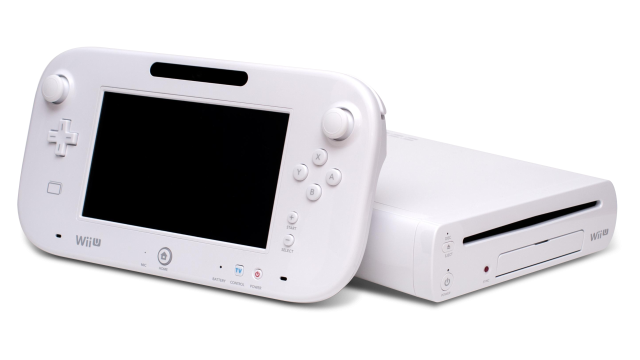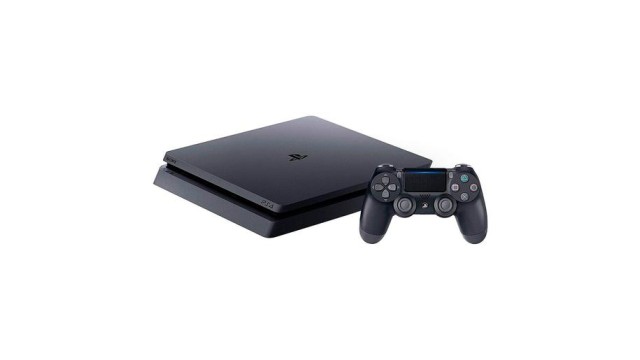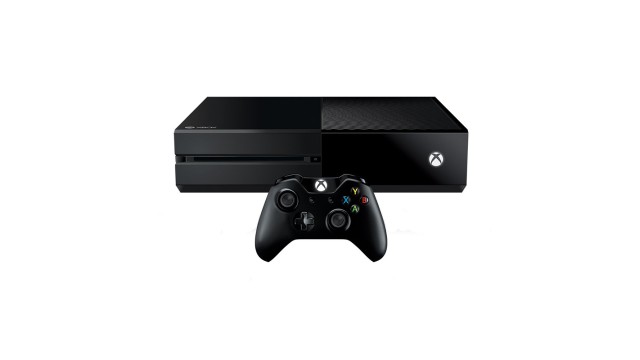
Wii U
Launches: 2012
Discontinued: 2017
Life span: 5 years
Units sold: 13 560 000
Generation: 8th
 Wii U technical specifications
Wii U technical specifications
CPU: Tri-Core IBM PowerPC "Espresso" @ 1.24 GHz
Memory: 2 GB
 Wii U video specifications
Wii U video specifications
Wii U graphics capabilities.
Video chip: AMD Radeon-based "Latte" @ 550 MHz
Video connection:
 Wii U audio specifications
Wii U audio specifications
Wii U sound capabilities.
Audio chip:
Audio mode: 5.1
 Controllers of Wii U
Controllers of Wii U
 Wii U games support
Wii U games support
Support: CD
Wii U games
Games library:
Wii U story
The Nintendo Wii U is a significant chapter in the history of video game consoles, representing both Nintendo's ambition to innovate and the challenges it faced in the rapidly evolving gaming market. The Wii U was envisioned as a successor to the immensely successful Wii, a console that had revolutionized gaming with its motion controls and broad appeal to both casual and hardcore gamers. However, as the industry advanced and competition intensified, Nintendo recognized the need to push the boundaries of what a gaming console could offer. This recognition led to the creation of the Wii U, a console that sought to blend traditional gaming with new, innovative features designed to keep Nintendo at the forefront of the industry.
The creation of the Wii U was rooted in Nintendo's desire to maintain the momentum generated by the Wii while also addressing some of the limitations that had become apparent with its predecessor. By the late 2000s, the gaming landscape was shifting, with the rise of HD graphics, online multiplayer experiences, and the increasing popularity of tablets and smartphones. Nintendo understood that to stay competitive, it needed to offer something that could not only compete with the likes of Sony’s PlayStation 3 and Microsoft’s Xbox 360 but also introduce new, compelling ways to play games. Thus, the concept of the Wii U began to take shape around the idea of enhancing the gaming experience through an innovative second screen, which would eventually become the Wii U GamePad.
The development of the Wii U was marked by a focus on creating a more immersive and versatile gaming experience, one that could offer new possibilities for gameplay. Central to this vision was the Wii U GamePad, a unique controller that featured a built-in touchscreen. The GamePad was designed to be more than just a controller; it was intended to serve as a secondary display, capable of providing additional information, maps, and inventory management, or even enabling entirely new forms of interaction, such as drawing and touch-based controls. Nintendo aimed to leverage this second screen to create deeper and more engaging gameplay experiences that would differentiate the Wii U from other consoles on the market.
The Wii U GamePad was a product of extensive research and development. Nintendo’s engineers and designers sought to strike a balance between functionality and comfort, creating a controller that was lightweight and easy to use while still offering a wide range of features. The GamePad included traditional buttons and analog sticks, ensuring it could support standard gameplay, but it also introduced new inputs like a stylus for the touchscreen, a built-in microphone, and a front-facing camera. These features were designed to expand the ways in which players could interact with games, fostering creativity and new forms of play. Additionally, the GamePad could be used independently of the TV, allowing for off-TV play—a feature that Nintendo hoped would appeal to households where the television might be in use for other activities.
Despite the innovative design of the GamePad, the development process was not without its challenges. One significant hurdle was ensuring that the Wii U could seamlessly handle dual-screen gameplay without compromising performance. This required a delicate balance between the console’s hardware capabilities and the demands of rendering content on both the TV and the GamePad simultaneously. To achieve this, Nintendo developed a custom hardware architecture that included an IBM PowerPC-based CPU and an AMD GPU, which together provided the necessary power to deliver HD graphics and smooth gameplay. However, this hardware, while a step up from the Wii, was still less powerful compared to the upcoming next-generation consoles from Sony and Microsoft, which would become a point of criticism later on.
The launch of the Wii U was a moment of great anticipation for Nintendo, as the company hoped to build on the success of the Wii and reassert its dominance in the gaming industry. The Wii U was officially announced at the Electronic Entertainment Expo (E3) in June 2011, where it generated significant interest due to its unique GamePad and the promise of new gaming experiences. The console was eventually released on November 18, 2012, in North America, followed by subsequent releases in other major markets. The Wii U was launched with two main bundles: the Basic Set, which included a white 8GB console, and the Deluxe Set, featuring a black 32GB console, a GamePad, and the game Nintendo Land.
The initial market reception of the Wii U was mixed, with early sales falling short of expectations. While there was excitement about the potential of the GamePad and the new gameplay possibilities it could enable, there was also confusion among consumers about the nature of the Wii U. Some potential buyers mistakenly believed that the Wii U was merely an accessory or upgrade to the existing Wii, rather than an entirely new console. This confusion was compounded by Nintendo’s marketing efforts, which failed to clearly communicate the differences between the Wii and the Wii U, as well as the benefits of the new system. As a result, the Wii U struggled to attract the broad audience that had embraced the Wii, particularly casual gamers and families who were unsure of what the new console offered.
Another factor that affected the Wii U’s reception was the limited number of compelling launch titles. While Nintendo Land and New Super Mario Bros. U were well-received, the overall launch lineup was seen as lacking the kind of blockbuster games that could drive console sales. Moreover, third-party support for the Wii U was lukewarm, with many developers hesitant to invest in the platform due to its relatively modest hardware capabilities and the challenges of developing for the dual-screen setup. This lack of strong third-party titles further hindered the Wii U’s appeal, especially as Sony and Microsoft prepared to launch their more powerful PlayStation 4 and Xbox One consoles.
As the Wii U’s life cycle progressed, these challenges persisted. Despite some standout games, such as Super Mario 3D World, Mario Kart 8, Splatoon, and The Legend of Zelda: The Wind Waker HD, the Wii U’s library never reached the critical mass needed to drive widespread adoption. The console's sales lagged significantly behind those of its competitors, with global sales ultimately reaching just over 13 million units by the end of its production in 2017. This made the Wii U one of Nintendo’s least successful home consoles, a stark contrast to the runaway success of the Wii.
The market reception of the Wii U highlighted several key issues that contributed to its struggles. Firstly, the GamePad, while innovative, was not as universally appealing as the motion controls of the Wii. The second-screen experience, while intriguing, did not resonate with a broad audience in the same way that the simplicity and accessibility of the Wii Remote had. Additionally, the Wii U’s hardware limitations made it difficult for the console to attract the same level of third-party support that had been a cornerstone of the PlayStation and Xbox ecosystems. The lack of clarity in Nintendo’s messaging and the failure to effectively differentiate the Wii U from its predecessor also played a significant role in the console’s lackluster performance.
Despite its commercial challenges, the Wii U did have a lasting impact on the gaming industry and on Nintendo’s future. Many of the lessons learned from the Wii U’s shortcomings were instrumental in the development of the Nintendo Switch, which would go on to become one of Nintendo’s most successful consoles. The concept of hybrid gaming, the focus on seamless transitions between home and portable play, and the emphasis on strong first-party titles were all elements that were refined and successfully implemented in the Switch, building on the foundation that the Wii U had laid.
In retrospect, the Wii U is often seen as a transitional console for Nintendo, a device that experimented with new ideas and technologies that would later be perfected in the Switch. While the Wii U itself may not have achieved the success that Nintendo had hoped for, it played a crucial role in the company’s evolution, helping to set the stage for the resurgence that would come with the Switch. The Wii U's legacy, therefore, is one of innovation and learning, a console that pushed boundaries and paved the way for the future of gaming.
Previous Nintendo console: Wii
Next Nintendo console: Nintendo Switch

